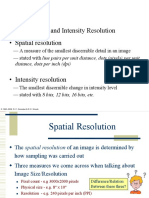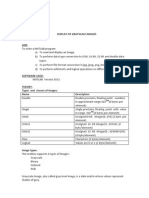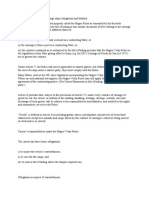100% found this document useful (1 vote)
1K views41 pagesImage Sampling and Quantization
Image sampling involves taking samples of a continuous image signal at regular intervals. Quantization involves mapping the sampled signal values to discrete levels. For images, this involves sampling the image spatially in x and y coordinates and mapping the amplitude values to a finite set of discrete intensity levels. Together, sampling and quantization convert a continuous image into a digital image represented by a 2D array of numeric values.
Uploaded by
NISHACopyright
© © All Rights Reserved
We take content rights seriously. If you suspect this is your content, claim it here.
Available Formats
Download as PPTX, PDF, TXT or read online on Scribd
100% found this document useful (1 vote)
1K views41 pagesImage Sampling and Quantization
Image sampling involves taking samples of a continuous image signal at regular intervals. Quantization involves mapping the sampled signal values to discrete levels. For images, this involves sampling the image spatially in x and y coordinates and mapping the amplitude values to a finite set of discrete intensity levels. Together, sampling and quantization convert a continuous image into a digital image represented by a 2D array of numeric values.
Uploaded by
NISHACopyright
© © All Rights Reserved
We take content rights seriously. If you suspect this is your content, claim it here.
Available Formats
Download as PPTX, PDF, TXT or read online on Scribd
/ 41

























































































